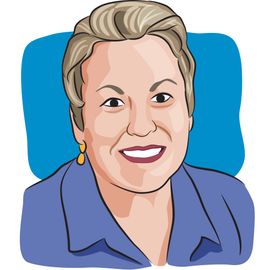- About Us
- Advertise / Support
- Editorial Board
- Contact Us
- CancerNetwork.com
- TargetedOnc.com
- OncLive.com
- OncNursingNews.com
- Terms & Conditions
- Privacy
- Do Not Sell My Information
- Washington My Health My Data
© 2025 MJH Life Sciences™ and CURE - Oncology & Cancer News for Patients & Caregivers. All rights reserved.
Connecting the World

Kathy LaTour is a breast cancer survivor, author of The Breast Cancer Companion and co-founder of CURE magazine. While cancer did not take her life, she has given it willingly to educate, empower and enlighten the newly diagnosed and those who care for them.
Susan G. Komen for the Cure has expanded its goal of breast cancer advocacy to the world stage.
Although Susan G. Komen for the Cure began funding global initiatives in the mid-1990s, it expanded its efforts in 2007 after the first Global Advocate Summit in Budapest, Hungary, when a nine-country pilot program was launched to help countries decrease their breast cancer mortality rate.
Today, Komen is active in 25 countries and has funded more than $30 million in global breast cancer projects that will impact education, research, and outreach around the world.
“The global statistics are compelling in terms of mortality,” says Annetta Hewko, vice president of global strategy and programs for Komen and a breast cancer survivor. “Across the globe a woman dies of breast cancer every 68 seconds, and, while the incidence may not be as high in low-resource countries, the mortality has prompted us to address it in a more meaningful way.”
Hewko says the organization has created a successful process for community grants that begins with the use of an education tool called Course for the Cure, a five-day curriculum used in the host country for those interested in impacting breast cancer in their local communities. The program encourages two-way communication between Komen and local advocates, whether they are survivors or health care professionals, to help identify needs in the community and understand Komen’s goals and structure.
“We have trained 600 individuals across nine countries who are out there putting their skills into practice,” Hewko says. “We can go into the millions for science grants, but even a $5,000 community grant can go a long way in a developing market. We see that as seed capital.”
One such seed grant to a project in Costa Rica supported a physical rehabilitation program for mastectomy patients. It showed such good results that the government added $175,000 to have the program duplicated. As a result, Hewko says, she hopes to see this kind of expansion of a small community grant happen in other countries.
A number of the international sites have begun raising funds with Komen’s signature event, the Race for the Cure, but Hewko says global events are adapted to fit the culture and capabilities of the local community and to raise visibility in areas where breast cancer is still a disease of silence. In these instances, she says, the power of the event is often found in the women coming forward and being willing to identify themselves as survivors by wearing pink T-shirts in countries where there is still stigma attached to the disease.
To those who say focus should stay in the U.S., Hewko reminds them that working globally will benefit all women as they join the sisterhood of cancer survivorship.
“What we learn about the disease, either in research or culture, makes us that much more effective in the United States in our underserved communities,” she says. “And remember that the cure can come from anywhere.”
To learn more about Komen’s global efforts, go to www.globalkomen.org.
Related Content:



